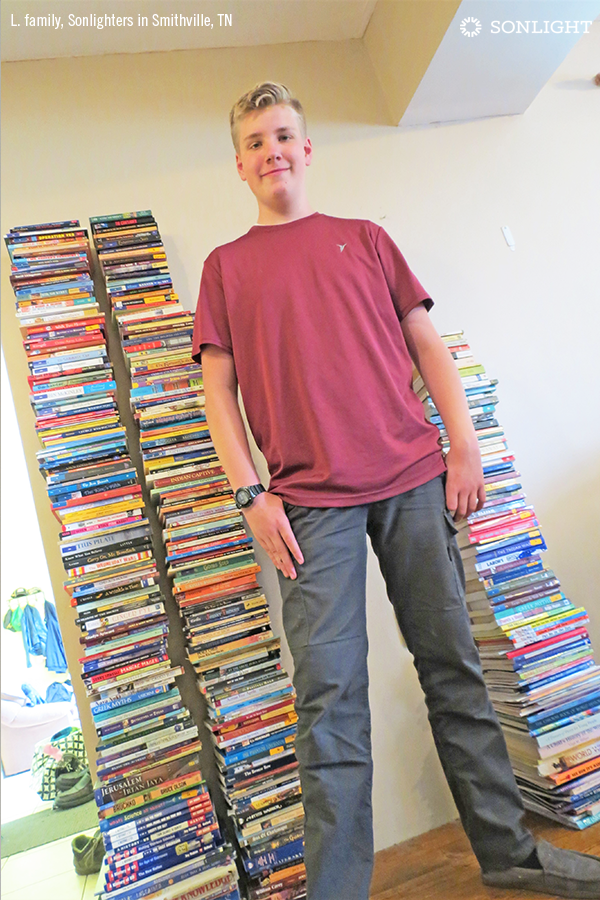We all want the very best curriculum for our children. Best case scenario: We pick a program and know with absolute certainty it will work in terms of both fun and rigor. But reality usually isn’t that simple, especially for a nervous newbie.
It’s kind of like choosing the best kind of ice cream for a party.
Some people love plain vanilla. Others want their vanilla with toppings. Still others prefer flavored ice cream: chocolate or strawberry. And we can’t forget the fancy options like rocky road, tin roof sundae, or jamoca almond fudge. Not everyone likes pistachio or mint. Some people can’t eat dairy. Other people might be allergic to chocolate or nuts. Some want a lower calorie snack, such as frozen yogurt or sugar-free ice cream.
There’s no possible way one type of ice cream will please every person in a large crowd. Likewise there’s no single curriculum can work for every child.
How Do I Find Out What Type of Curriculum Will Work for My Child?
How do you discover what curriculum suits your child? First research. And then a lot of trial and error. Arm yourself with information from a wide swath of sources:
- Request catalogs from curriculum companies.
- Take advantage of free trials or curriculum samples.
- Go to homeschool conventions. These events gather many vendors in one area so you can see the programs firsthand and even ask publishers, writers, or representatives any questions you have.
- Join a local homeschool group in your community. Many experienced homeschoolers will share with you what they have tried and possibly let you look at their materials.
- Join online groups for homeschoolers. There are both general groups and groups for specific brands, special needs, or situations.
- Check websites that specialize in curriculum reviews. You can read through the articles and see which resonate the most with you or your child’s learning preferences.
Then start weeding through all the possible choices, looking for the features that appeal to you.
Appealing Curriculum Features
- Covers topics you or your student will want to learn about
- Teaches in a way that is interesting or will hold your child’s attention
- Falls in line with your belief system
- Matches your educational philosophy
- Makes sense to you when you read about it
- Piques your curiosity to learn more about how it works
Unappealing Curriculum Features
- Seems complicated or hard to understand
- Sounds like too much work or too time-consuming
- Uses an avenue of learning that you don’t prefer
- Sounds like things you have tried in the past that haven’t worked
- Fills you with a sense of dread or uneasiness
What Do I Do Next?
Once you’ve narrowed down your list to a few possible options, try going through them again. See if one program exerts some sort of pull on you. If you are an intuitive person, you will often just know that a particular curriculum is good and right.
If nothing jumps out, find one that sounds like it would be fun to teach or that your child would enjoy learning from. Pray over your choices or get input from your spouse or the students themselves. Go online and ask questions from a curriculum-specific group to get ideas and opinions from other users.
What If I Like More Than One Program?
If you end up with a mix of different programs in your pile of keepers, know that it’s okay to mix and match. You might enjoy one program for language arts and a different program for history. You might love science from one vendor, or really like everything except math from another.
Sonlight, for example, allows you to customize packages that include precisely what you want, while offering you more than one option for handwriting, math, and more. This flexibility allows you to do much of your shopping in one place.
If you like more than one program for the same subject, you might consider trying one this year and the other the next. Or do more research. Email the curriculum provider with questions, talk to an advisor, and ask what kind of guarantee and return policy is available.
What If I Don’t Know How to Teach a Subject?
There are many programs that will walk you through how to teach. For example, Math U See will teach high school math for you, and All About Spelling is scripted so you know exactly what to say. Other programs will provide extra notes for the teachers or online support or help lines.
You can learn alongside your child, hire a tutor, or use a program that will teach for you. You aren’t required to be an expert in every subject. Or even any subject.
What If I Don’t Like a Subject?
You can outsource subjects you don’t like to a spouse, relative, a community class, or even to your child for independent learning. You aren’t required to love every subject you teach. For example, I really don’t like teaching poetry. But with a poetry tea-time and a bit of acting, we can make poetry interesting and fun.
If I act like I don’t like a subject and let my children see my attitude, chances are good they will pick up on and mimic my mood. Don’t pass your academic fears or distastes to your child. Remain upbeat about every subject. Who knows? Your child may turn out to adore the subject that always gave you terrors.
You can also reframe how you think about a subject. I used to be apprehensive about teaching science. I remember how hard science was for me in high school with a teacher who didn’t stop to explain what we were supposed to be doing. She just expected us to know. When I separated my own bad experience with science from what I wanted my children to learn, I was able to view the subject differently.
I wanted to teach my children with the sense of wonder I felt the first time my (atheist) college professor explained that a human nerve cell, if blown up to the size of a baseball, would have dendrites that would fill up the entire room we were sitting in, and the axon terminals would be far outside the building plaza we were in. I wanted my children to have that same sense of awe at God’s masterful creation.
So now when I teach science, I teach from that wonder-infused perspective, and it’s more interesting for all of us.

“Isaac (now in 10th grade) has been using Sonlight since first grade. Isaac is 6 feet tall, and we thought it would be fun to see how many 6-foot stacks of books we could make—over 2 and a half stacks and over 400 books! Isaac is an avid reader and has read many of these books more than once. Thank you, Sonlight, for the thought-provoking literature.” -Zachary L. of Smithville, TN
What If My Children Or I Am Bad in a Subject?
Most of the time, when a person thinks they are bad in a subject, it’s because they weren’t taught it in a way they could fully comprehend. Sometimes, the teacher goes too fast and doesn’t take the time to make sure a child is really fully grasping the topic. Other times, there’s an underlying disability or problem that’s causing the child to struggle to learn.
As a homeschooling parent who chooses their children’s curriculum, you have the freedom to adjust your methods and find a program that will teach in a way that works for your kids. Keep looking until you find a program that makes sense for you.
What If My Child Doesn’t Do Well with the Curriculum I Chose?
I’m reminded of a quote I heard a long time ago, “You don’t teach the curriculum; you teach the child.” If a child is struggling with a curriculum, it might mean that the curriculum doesn’t work for your child or that you need to adjust something to make it work. It doesn’t mean your child is a failure or that you are a failure as a teacher.
What If I Chose the Wrong Curriculum for My Child?
Children aren’t created with permanent marker. Most of the time, even large mistakes, can be easily corrected or adjusted with little fallout. Don’t be so afraid of making mistakes that you are paralyzed. Once you narrow down your choices, most anything you opt for is likely to work fairly well.
And in the case that you’ve made the best choice you can, and you still find it’s just not working, you’re free to change things up. Maybe cross off half of the math problems, only require every other writing assignment, or do dictation via typing rather than with pencil on paper.
If you do find the curriculum is the absolute wrong fit, a few companies will refund part of your money. Sonlight, my favorite curriculum, has a generous return policy and satisfaction guarantee.
While there are benefits to sticking with a curriculum, it’s okay to switch to something else when there are more cons than pros. One thing you don’t want to do is to keep pushing a program that isn’t working. Pushing harder doesn’t make the glass slipper fit better if you aren’t Cinderella.

Can I Make My Own Curriculum?
Sure! But keep in mind, it is a lot of work and takes a lot of time. You will probably feel more confident using a pre-planned program your first few years of homeschooling. Once you have your footing, then you can take a DIY approach.
Then again, plenty of parents realize the amazing time-saving factor of a well-planned curriculum and stay the course even when they have the know-how to create their own. Why would you go to all the trouble when there’s something excellent already done for you? You can spend that extra time on your own hobbies, volunteering, going back to school yourself, or your side gig.
What If I Forget Something?
The good news is, children don’t learn only from September to May. Add in the forgotten materials when you can whether that’s in November, February, or April. Or cover them over the summer.
When I first started homeschooling, choosing a curriculum seemed daunting. Today, over 14 years later, there are even more excellent programs to choose from. No wonder choosing a curriculum feels like a chore!
But you don’t have to make the perfect decision today. Over the last 14 years, we’ve tried many programs, and although we keep coming back to Sonlight as our base, we have found a lot of other great products we enjoy supplementing with. Our children are not locked into one system for life, and neither are yours. Choose what you think is best for now, and each year, keep adjusting to maintain your perfect fit.


